Freshwater stem plants, such as the vibrant Anacharis and the alluring Ludwigia, are central components of aquarium ecosystems, contributing to their balance, aesthetic appeal, and overall health.
They play a crucial role as natural purifiers. By reducing levels of nitrates, phosphates, and other toxins, they help maintain water quality, deter the growth of harmful algae, and oxygenate the water, ensuring a healthy environment for aquatic life. Furthermore, these plants offer shelter and breeding spots for various aquarium inhabitants, including fish, shrimp, and snails.
- Related: 12 Best Carpeting Plans
- Related: 7 Rare & 11 Common Aquarium Mosses
- Related: Top 16 Background Plants
- Related: Top 10 Aquarium Foreground Plants
By mimicking their natural habitats, stem plants can alleviate stress and encourage natural behavior, fostering a thriving aquatic community. In terms of aesthetics, freshwater stem plants offer a broad spectrum of colors, shapes, and sizes. This diversity gives aquarists the freedom to create unique, captivating underwater landscapes tailored to their preferences.
Table of Contents
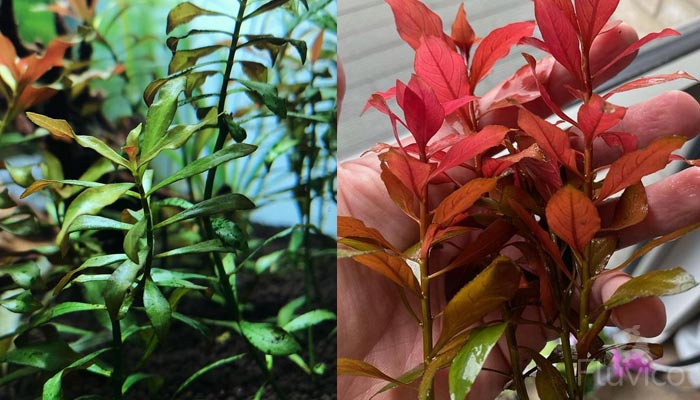
Ludwigia
Ludwigia is a highly regarded genus of aquatic plants, notable for their vibrant colors and versatility. They are suitable for aquarists at all skill levels due to their adaptability to various water conditions.
- Variety: Over 30 species with diverse leaf shapes, sizes, and colors, from verdant greens to intense reds.
- Size: Depending on the species, Ludwigia plants can range from modest, suitable for smaller tanks, to larger, perfect for creating a focal point in more extensive setups.
- Growth: Known for their rapid growth, Ludwigia provide swift coverage, contributing to a lush aquarium aesthetic.
- Environment: Ludwigia plants are highly adaptable, tolerating a range of water conditions, making them an excellent fit for diverse aquarium environments.
- Aesthetic: Their vibrant colors and interesting leaf shapes add a unique visual appeal to any aquarium setup.
- Habitat: They create a natural, comforting habitat for aquatic animals, offering shelter and breeding grounds.
- Maintenance: While they are generally low-maintenance, pruning can encourage bushier growth and maintain desired shape and size.
- Water Temperature: Most Ludwigia species thrive in water temperatures between 20-28°C (68-82°F), accommodating a wide range of tropical fish.
Hygrophila
Hygrophila is an adaptable, fast-growing aquatic plant that’s perfect for aquarists seeking a lush, green backdrop. Its hardy nature and attractive foliage make it a popular choice in various aquarium settings.
- Variety: Includes several species such as Hygrophila polysperma and Hygrophila corymbosa, each with its unique leaf shape and size.
- Size: Typically grows tall, making it an excellent background plant.
- Growth: Fast-growing, filling up spaces quickly.
- Environment: Highly adaptable to various water conditions.
- Aesthetic: Provides a dense, green foliage for a natural, serene ambiance.
- Habitat: Offers shelter and privacy for aquatic creatures.
- Maintenance: Low; periodic trimming encourages denser growth.
- Water Temperature: Prefers warmer waters, ideally between 22-28°C (72-82°F).
Alternanthera
Alternanthera is a vibrant aquatic plant known for its strikingly colorful, often red-hued leaves. Offering visual interest and habitat benefits, it’s an excellent addition to aquariums seeking a dash of color.
- Variety: Multiple species, each with distinct leaf shapes and colors.
- Size: Medium to large-sized, ideal for mid-ground or background placement.
- Growth: Moderately fast, given appropriate lighting and nutrients.
- Environment: Adaptable, but prefers slightly acidic to neutral water.
- Aesthetic: Stunning, often red, leaves create a vibrant contrast in green-heavy aquascapes.
- Habitat: Provides shelter and spawning areas for fish.
- Maintenance: Moderate; regular pruning and nutrient supplementation enhance color and growth.
- Water Temperature: Thrives in a range of 22-28°C (72-82°F).
Hornwort
Hornwort, also known as Ceratophyllum, is a versatile, fast-growing aquatic plant highly favored for its hardy nature and feathery, bright green foliage. Its capacity to thrive in various conditions and its multiple benefits for aquarium health make it an excellent choice for both beginners and experienced aquarists.
- Variety: While it’s mainly one species, Ceratophyllum demersum, its appearance can vary depending on growing conditions.
- Size: Hornwort can grow quite tall, making it an ideal backdrop for many aquariums.
- Growth: Renowned for its fast growth, it quickly provides dense coverage in your tank.
- Environment: Extremely adaptable, Hornwort can flourish in a wide range of water conditions.
- Aesthetic: Its feathery, bright green foliage adds a soft, lush texture to aquariums.
- Habitat: Provides excellent shelter for fish and other aquatic creatures, and can be a preferred spot for spawning.
- Maintenance: Low-maintenance, but trimming controls growth and prevents it from overshadowing other plants.
- Water Temperature: Thrives in a wide temperature range from 15-30°C (59-86°F), making it suitable for both cold water and tropical tanks.
Water Wisteria
Water Wisteria, scientifically known as Hygrophila difformis, is a beautiful and highly adaptable aquatic plant. This easy-to-care-for plant is characterized by its unique, lace-like leaves and fast growth, making it a favorite among aquarists, from beginners to experts.
- Variety: Primarily a single species with unique, deeply lobed, feathery leaves.
- Size: Can grow tall and broad, making it suitable for background or midground placement.
- Growth: Known for its rapid growth rate, helping to quickly fill in spaces in the aquarium.
- Environment: Adaptable to various water conditions, but prefers slightly acidic to neutral pH.
- Aesthetic: The intricate, lace-like leaves add a unique texture and green vibrancy to any aquarium setup.
- Habitat: Its lush growth provides shelter and spawning areas for fish and other aquatic life.
- Maintenance: Low-maintenance but benefits from regular pruning to manage growth and promote bushiness.
- Water Temperature: Thrives in warmer waters, ideally between 22-28°C (72-82°F).
Golden Nesaea
Golden Nesaea, or Nesaea pedicellata ‘Golden’, is a striking aquatic plant known for its beautiful golden-yellow leaves. This plant, while a bit more demanding than some others, is highly prized for the unique color contrast it brings to an aquarium. Key characteristics of Golden Nesaea:
- Variety: Generally a single species, but its golden-yellow coloration sets it apart in an aquascape.
- Size: Typically grows to a moderate height, ideal for midground placement to highlight its unique color.
- Growth: Moderate growth rate, dependent on optimal lighting and nutrient conditions.
- Environment: Prefers slightly acidic to neutral pH levels and requires good lighting to maintain its vibrant color.
- Aesthetic: Its golden-yellow leaves offer a stunning contrast to the common green hues in most aquariums.
- Habitat: Provides cover for fish and invertebrates, and its thicker stems can be a preferred site for spawning.
- Maintenance: Requires a bit more care, including regular pruning, good lighting, and nutrient supplementation for optimal health and color.
- Water Temperature: Thrives in water temperatures between 22-26°C (72-78°F).
Bacopa
Bacopa is a genus of aquatic plants beloved for its delicate, round leaves and slow, steady growth. Its undemanding nature and the tranquil ambiance it creates make Bacopa a popular choice among aquarists of all experience levels. Key characteristics of Bacopa:
- Variety: Contains several species such as Bacopa caroliniana and Bacopa monnieri, each offering its unique visual appeal.
- Size: Typically grows tall, making it suitable for the midground or background in most aquariums.
- Growth: Known for its steady, slow to moderate growth rate.
- Environment: Tolerates a range of water conditions but prefers slightly acidic to neutral pH levels.
- Aesthetic: Its small, round leaves and branching growth pattern add a soothing, dense green touch to any aquarium.
- Habitat: Provides cover and breeding grounds for a variety of aquatic creatures.
- Maintenance: Low; occasional trimming helps maintain the shape and promotes branching.
- Water Temperature: Best suited to a range of 15-30°C (59-86°F), making it versatile for both tropical and colder water aquariums.
Pennywort
Pennywort, commonly referring to Hydrocotyle leucocephala, is a versatile and attractive aquatic plant known for its characteristic round leaves and trailing growth pattern. Its ease of care and adaptability to different placements in an aquarium make it a favorite among aquarists. Key characteristics of Pennywort:
- Variety: Typically a single species in aquarium usage, recognized by its unique coin-shaped leaves.
- Size: Grows tall and can be left floating or planted into the substrate, offering flexibility in placement.
- Growth: Exhibits a moderate to fast growth rate, quickly providing a green, leafy presence.
- Environment: Adaptable to a variety of water conditions.
- Aesthetic: The distinctive round leaves and trailing growth add a unique and appealing look to aquariums.
- Habitat: Creates a dense cover when floating, providing shade and shelter for aquatic inhabitants.
- Maintenance: Low; trimming helps manage growth and maintain desired appearance.
- Water Temperature: Thrives in a wide temperature range from 20-28°C (68-82°F).
Cabomba/Fanwort
Cabomba, also known as Fanwort, is an enchanting aquatic plant recognized for its fan-shaped, feathery leaves. Its lush and intricate foliage not only enhances the aesthetics of an aquarium but also provides an excellent habitat for aquatic life, making it a favored choice among aquarists. Key characteristics of Cabomba:
- Variety: Several species available, including Cabomba caroliniana and Cabomba aquatica, each with slightly different leaf structures and colors.
- Size: Grows tall and can reach the water surface in most aquariums, perfect as a background plant.
- Growth: Known for its fast growth rate, quickly adding a dense, leafy presence.
- Environment: Prefers slightly acidic to neutral pH levels and requires good lighting to thrive.
- Aesthetic: The intricate, fan-shaped leaves provide a unique texture and lush green or sometimes red color to aquariums.
- Habitat: The dense, feathery leaves offer excellent shelter and spawning areas for aquatic creatures.
- Maintenance: Moderate; regular pruning is needed to control growth and remove older leaves.
- Water Temperature: Does well in a temperature range of 23-27°C (73-81°F), suitable for most tropical aquariums.
Rotala rotundifolia
Rotala rotundifolia, a popular choice in the aquascaping world, is an aquatic plant known for its slender leaves and beautiful color gradient. Its vibrant hues, ease of care, and prolific growth make it an excellent choice for adding both color and density to aquarium environments. Key characteristics of Rotala rotundifolia:
- Variety: Typically comes as a single species, but its color can vary from green to pink and red depending on lighting conditions.
- Size: Can reach moderate to tall heights, making it suitable for midground or background placement.
- Growth: Exhibits a fast growth rate, quickly providing dense coverage and a bushy appearance.
- Environment: Adaptable to a variety of water conditions, but its color intensifies under high lighting and with nutrient supplementation.
- Aesthetic: Its slender leaves and beautiful color gradient add an eye-catching element to any aquarium setup.
- Habitat: Its dense growth provides shelter and spawning grounds for aquatic creatures.
- Maintenance: Moderate; requires regular trimming to maintain shape and promote bushier growth.
- Water Temperature: Thrives in water temperatures between 22-28°C (72-82°F).
Parrot’s Feather
Parrot’s Feather, or Myriophyllum aquaticum, is an attractive aquatic plant recognized for its distinctive, feather-like foliage that breaks the water surface, resembling a parrot’s plumage. Its unique appearance, coupled with its ability to improve water quality, makes it a valuable addition to many aquariums. Key characteristics of Parrot’s Feather:
- Variety: Generally a single species with uniquely feathered, bright green leaves.
- Size: Grows tall, with foliage extending above the water surface in many aquariums.
- Growth: Moderate to fast growth rate, quickly creating a lush, green presence.
- Environment: Highly adaptable, tolerating a wide range of water conditions.
- Aesthetic: Its feather-like foliage, particularly when breaking the water surface, offers a distinctive look in aquariums.
- Habitat: Its dense underwater growth provides excellent shelter and spawning grounds for aquatic creatures.
- Maintenance: Low to moderate; regular trimming helps control its spread and maintain the desired appearance.
- Water Temperature: Does well in a wide temperature range from 18-26°C (64-79°F).
Ammania gracilis
Ammania gracilis, colloquially referred to as Delicate Ammannia, is a remarkable aquatic plant showcasing vivid red hues and slender leaf formations. Its striking appearance and ability to infuse dynamic color into aquarium environments make it a captivating addition for aquarists seeking diversity. Key characteristics of Ammania gracilis:
- Variety: Predominantly a single species known for its bold, reddish-pink coloration under optimal lighting.
- Size: Reaches moderate to tall heights, lending itself well to midground or background positions.
- Growth: Exhibits a steady growth rate, with the pace accelerating under ideal light and nutrient conditions.
- Environment: Thrives best in well-lit aquariums with slightly acidic water and a nutrient-rich substrate.
- Aesthetic: The bright red hues and sleek leaf shape contribute an element of drama and visual interest.
- Habitat: Its leafy stems create hiding spots and rest areas for aquatic inhabitants.
- Maintenance: Moderate care requirements; benefits from nutrient supplementation and regular pruning to maintain shape.
- Water Temperature: Prefers warmer conditions, optimal in the range of 24-28°C (75-82°F).
Anacharis
Anacharis, also known as Egeria densa, is a prolific aquatic plant highly esteemed for its hardiness and oxygenating properties. Its lush greenery and easy care requirements make it an ideal candidate for beginners looking to green their aquatic environments. Key characteristics of Anacharis:
- Variety: Most commonly a single species in aquariums, recognized by its clustered leaf arrangements on long stems.
- Size: Typically grows tall and can reach the water surface in most aquariums, excellent for backdrops.
- Growth: Exhibits a fast growth rate, providing ample greenery in a short time.
- Environment: Highly versatile, tolerates a range of water conditions, but thrives best under moderate lighting.
- Aesthetic: The bright green, clustered leaves on elongated stems present an appealing, natural look.
- Habitat: Its dense growth serves as a prime sanctuary for small fish and invertebrates, even acting as a preferred site for egg-laying.
- Maintenance: Low; trimming helps keep its rapid growth in check and maintains the health of the plant.
- Water Temperature: Accommodates a wide temperature range from 15-30°C (59-86°F).
Mermaid Weed/Saw-Tooth Hygro
Mermaid Weed, also known as Saw-Tooth Hygro or scientifically Proserpinaca palustris, is a unique aquatic plant valued for its finely cut, saw-toothed leaves. This intriguing species stands out in any aquarium with its captivating color gradient and texture, particularly when provided with adequate light and nutrients. Key characteristics of Mermaid Weed:
- Variety:A single species exhibiting varied color gradation from green to orange and pink under suitable lighting.
- Size: Tends to grow tall, suitable for midground or background placement in most aquariums.
- Growth: Has a moderate growth rate, offering a steady development of intriguing foliage.
- Environment: Favors slightly acidic to neutral pH levels and enjoys a well-lit aquarium with a nutrient-rich substrate.
- Aesthetic: The fine, serrated leaves and vibrant color shift from green to orange and pink add unique visual interest.
- Habitat: Its lush growth provides suitable cover, adding complexity to the environment for aquatic inhabitants.
- Maintenance: Moderate; benefits from nutrient additions and needs regular pruning to maintain its shape and health.
- Water Temperature: Flourishes in water temperatures between 22-28°C (72-82°F).
Moneywort
Moneywort, also known as Bacopa monnieri, is a classic aquatic plant noted for its small, round leaves and creeping growth habit. This easy-to-care-for plant is an excellent choice for aquarists looking for a reliable and visually appealing plant that adds an interesting layer of texture to aquariums. Key characteristics of Moneywort:
- Variety: A single species in aquariums, appreciated for its appealing leaf structure and formation.
- Size: Generally moderate in height, suitable for midground placement and can reach the surface in shallow setups.
- Growth: Features a moderate growth rate, forming a verdant presence in due course.
- Environment: Prefers moderately soft to hard water with a slightly acidic to neutral pH.
- Aesthetic: The charming round leaves and creeping growth habit create a visually pleasing texture.
- Habitat: Its dense growth provides a network of safe hiding spots and resting areas for aquatic creatures.
- Maintenance: Requires low care, with occasional pruning to control its spread and promote bushier growth.
- Water Temperature: Thrives in a broad temperature range from 15-30°C (59-86°F).
In summary, freshwater stem plants, from the vibrant Ludwigia to the resilient Anacharis, offer a diversity of visual appeal, environmental benefits, and habitat support in aquariums. Their varied size, growth patterns, and maintenance levels cater to aquarists of all skill levels.
Choosing the right mix of these incredible plants can enhance the aesthetics of your aquarium, promote a healthier aquatic environment, and create a thriving habitat for your underwater inhabitants.
More Reading
- 15 Types of Cryptocoryne: Which is Best For Your Aquarium Setup?

- 16 Awesome Low Light Aquarium Plants (Mosses, Ferns & Stem Plants)

- 16 Fast Growing Freshwater Aquarium Plants

- 18 Types of Aquarium Moss: Photos, Care, Propagation & Growth Guide

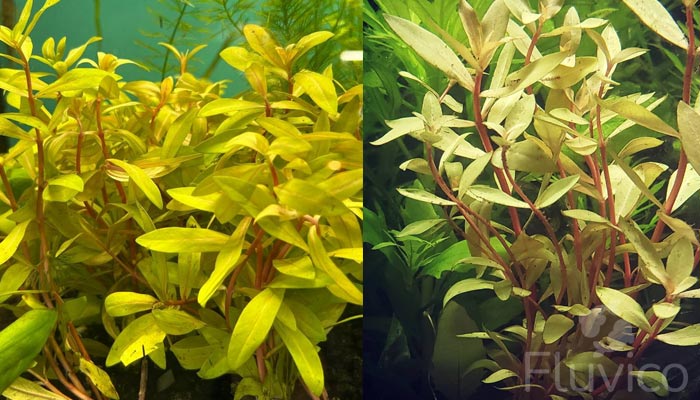

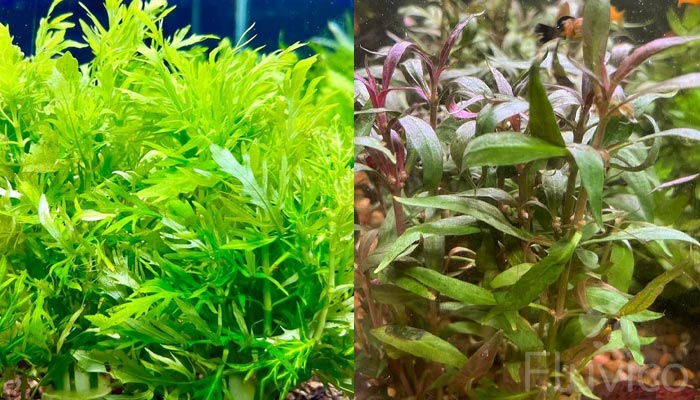
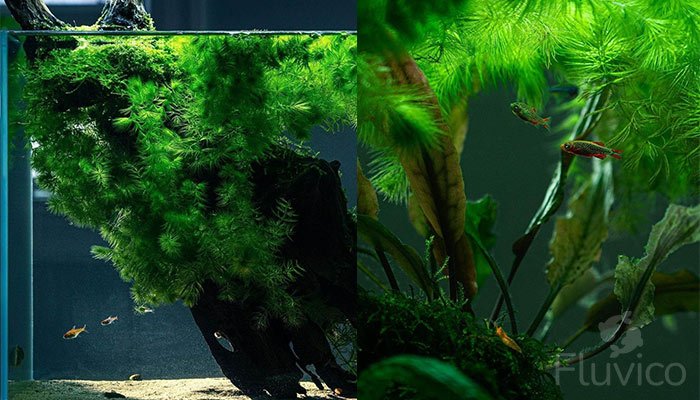
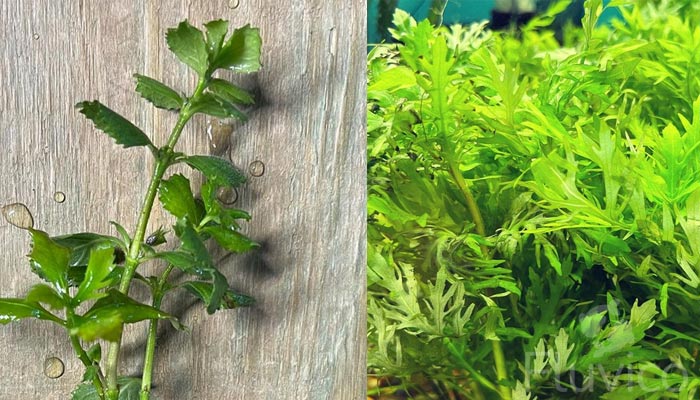
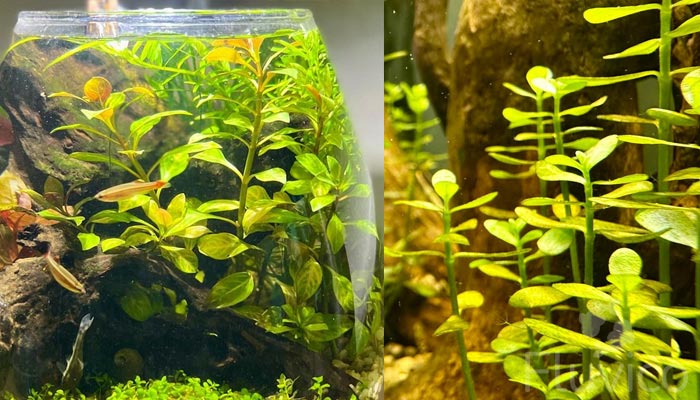

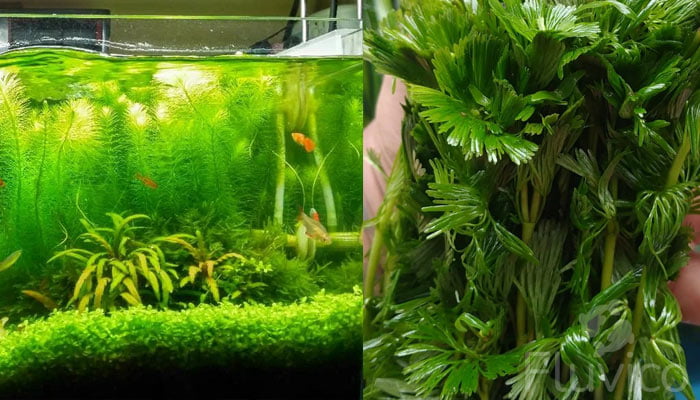
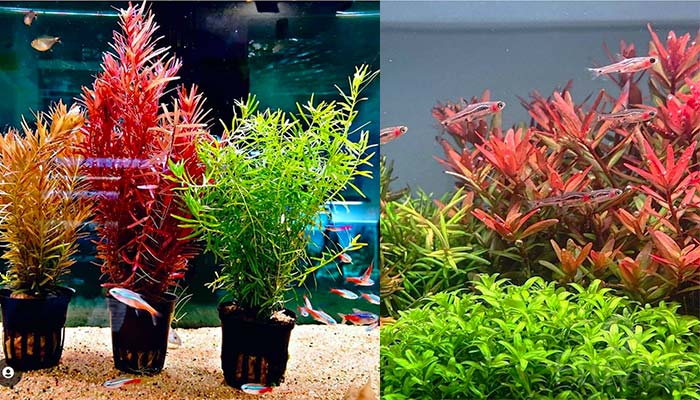
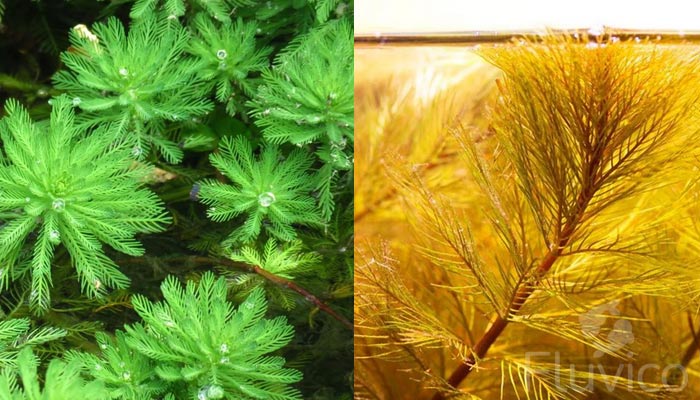
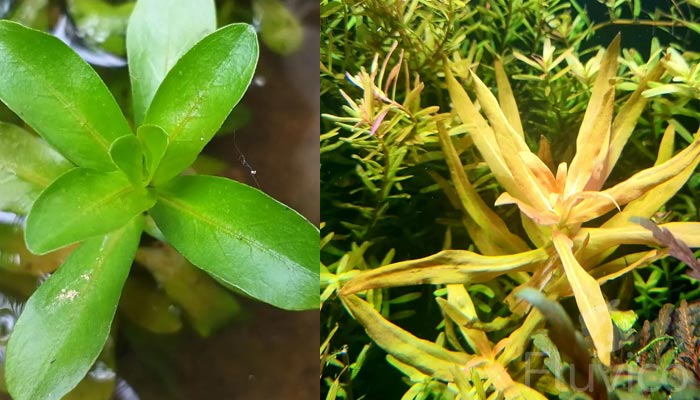
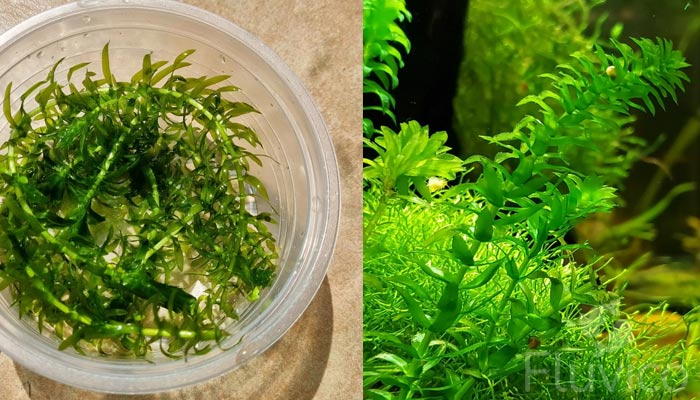
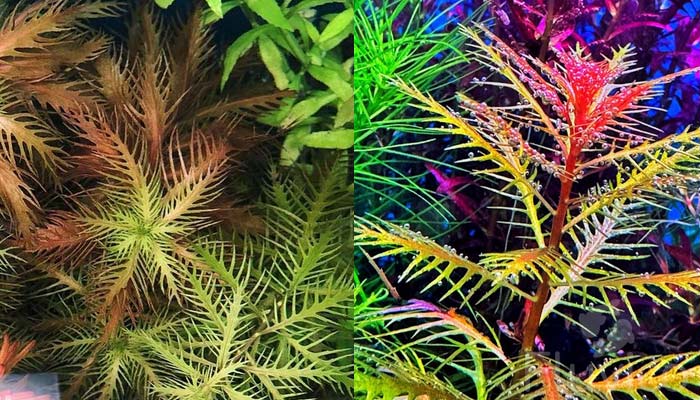
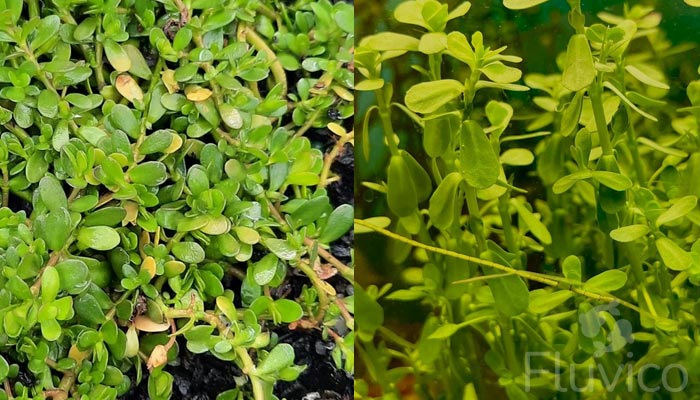
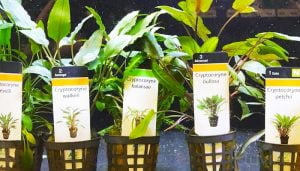
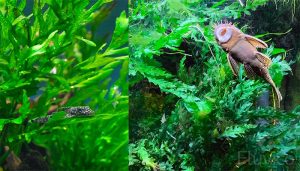
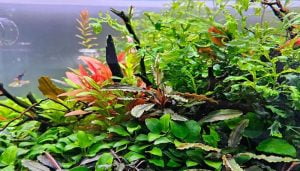

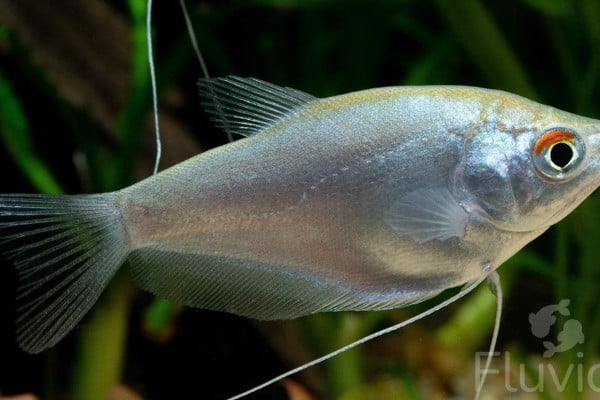
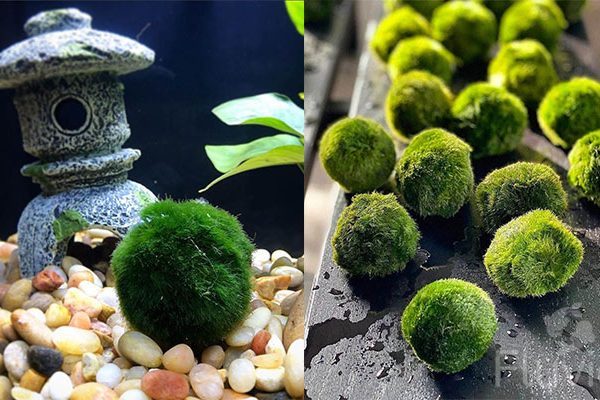
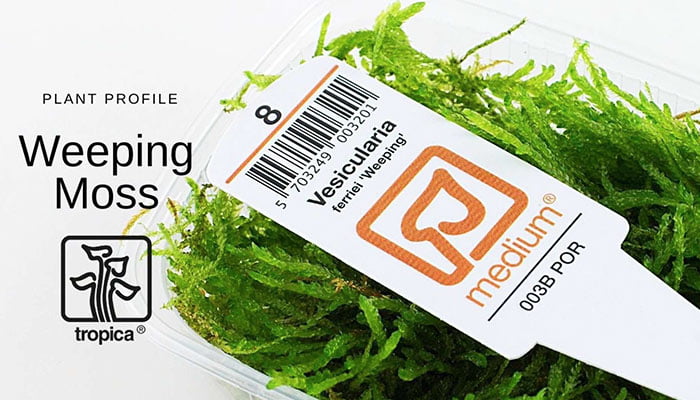
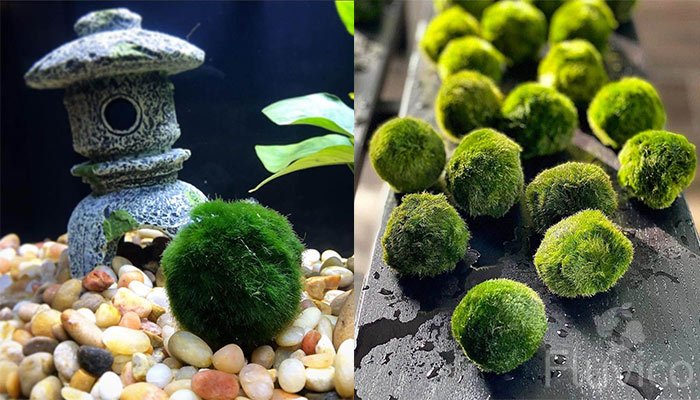
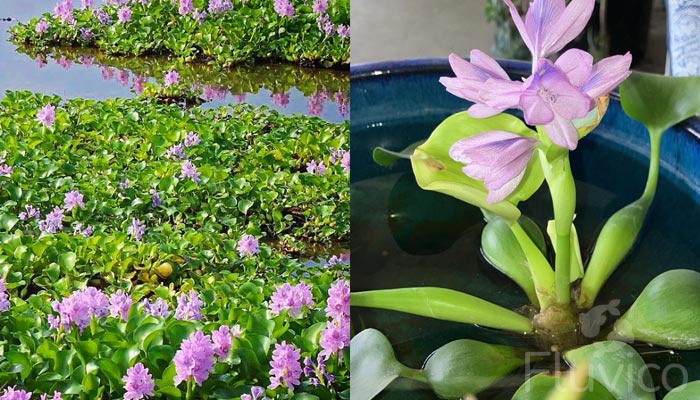
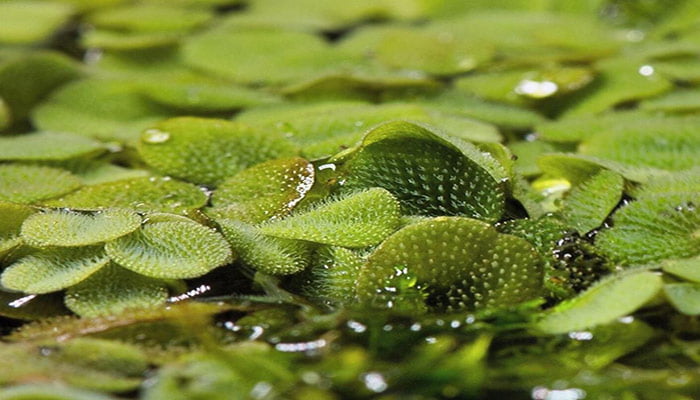
Hope you enjoyed our 15 Freshwater Stem plants
If you have any questions? Ask away, we’re here to help!
All the best,
Daniel